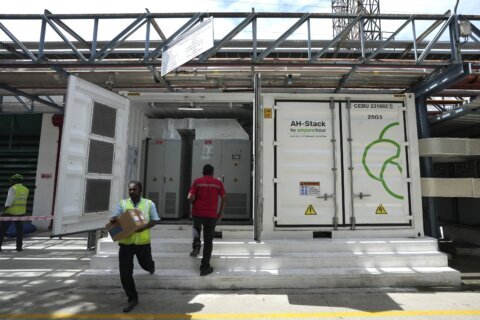As college costs continue their decades-long climb, pushing U.S. student loan debt to nearly $1.8 trillion and counting, rising administrative costs are likely to contribute to higher costs for students.
The central mission of higher education is teaching, but in recent years administration has enlarged as a share of institutional spending. Some observers and researchers who promote greater financial transparency and accountability in higher education are concerned that growth in professional nonteaching positions is generally outstripping faculty hiring, even as student enrollment declines.
“In higher ed, it takes more workers to educate a given number of students today than it did a generation or even two generations ago,” says Richard Vedder, an economist and distinguished professor of economics emeritus at Ohio University. “That’s the opposite of what you see in other fields and industries.”
Spending on Instruction Is Going Down
The gap between what U.S. colleges spend on teaching versus administrative support has steadily closed over the years, according to data provided to U.S. News by the National Center for Education Statistics.
At public four-year schools in 2010, 32.1% of expenditures were for instruction and 23.7% were for academic support, student services and institutional support. In 2021, instructional spending had decreased 4.7 percentage points to 27.4% of total expenditures while spending on academic support, student services and institutional support dropped less than 1 percentage point, to 22.9%.
The change was more dramatic at private, nonprofit four-year schools. In 2010, 32.7% of expenditures were for instruction and 30% were for academic support, student services and institutional support. The dominance flipped in 2021, with instruction declining to 29% of expenditures while academic support, student services and institutional support accounted for 29.6%.
Employee ranks have grown at some schools, but that hasn’t always meant more instructional faculty, observes Vedder, who served as director of the now-defunct Center for College Affordability and Productivity, an independent nonprofit center in Washington, D.C., that researched public policy and economic issues related to postsecondary education. He notes that the ratio of faculty to administrators has flipped since the 1970s and the number of administrators per student has increased, especially where professional nonteaching staff are included.
“Most U.S businesses are doing tasks with fewer workers,” Vedder says. “But the number of (college) administrators has soared relative to the number of students and to the number of faculty, and there’s a corresponding increase in the cost of doing business.”
The steady growth in administrative and nonteaching staff positions is largely due to broader student support, often referred to as “wraparound services,” in areas such as mental health, entertainment, intramural sports, academic support, workforce preparedness and initiatives focused on diversity, equity and inclusion. Administrative positions in these areas typically are salaried rather than hourly or part-time, and are increasing while the ranks of tenured faculty are flat or declining along with secretarial, maintenance, groundskeeping and other such jobs, experts note.
“A university is not an all-service commune with full-service, soup-to-nuts care for every need, as if students were children,” says Jay P. Greene, a senior research fellow at The Heritage Foundation’s Center for Education Policy in D.C. “The core mission of a school is teaching and research, so those should be the priorities, as well as limiting the cost to families and taxpayers. But that’s not their priority. Their priority is to expand empires.”
Donna Desrochers, a senior associate at rpk GROUP, a national higher education consulting firm, and former principal researcher in the education program at the American Institutes for Research, says that while colleges could be more financially transparent, “some of this staffing up is legitimate” to address equity gaps and help students do well.
“I don’t think it’s all bloat,” she says. “It’s more nuanced than, ‘Universities are hiring all these professionals they don’t need.’ Investments in student success are worthwhile. It costs a lot to get students enrolled, and it’s best to help them persist and succeed in college.”
Changing Student Demographics
Many colleges are spending more on student services partly due to changes in college demographics, as more first-generation, low-income, older and other nontraditional college students with varying needs make up a growing proportion of student populations. The efforts are meant to bolster student success, but they usually come with budgetary trade-offs, experts say.
More than ever, colleges are enrolling “nontraditional students with nontraditional problems that need extra services that schools usually did not provide,” says Andrew Gillen, a senior policy analyst at the nonprofit Texas Public Policy Foundation. “There’s no doubt that administrative costs and staffing have kind of increased dramatically over the past few decades. It’s not inevitable, as some say, or nothing to worry about.”
Part of the problem, Gillen says, is that some administrative growth appears to be “bureaucracy and bloat run amok.” Gregory Price, a business professor in the economics and finance department at the University of New Orleans in Louisiana, shares a similar view, saying that “increased bureaucratization” of higher ed has fueled cost increases and caused many people to question the value proposition of college.
Some critiques have been more public. Benjamin Ginsberg, a political science professor at Johns Hopkins University in Maryland and chair of the Hopkins Center for Advanced Governmental Studies in Washington, D.C., examined the trend of dramatic administrative growth in his 2011 book, “The Fall of the Faculty: The Rise of the All-Administrative University and Why It Matters.” He suggests that a watered-down educational experience for students is among the consequences of decreasing ranks of full-time teaching faculty and increasing numbers and influence of administrators and staff.
In 2017, George Mason University Antonin Scalia Law School professor Todd J. Zywicki and former GMU senior research fellow Christopher Koopman, now executive director of The Center for Growth and Opportunity at Utah State University, published a research paper suggesting possible reasons for more administrative spending and less instructional spending, including that “faculty members have outsourced many of their traditional duties to academic administrators, such as student advising and perhaps other duties.”
[Read: 50 Questions to Ask on a College Visit.]
According to 12-month college enrollment surveys and data from the Integrated Postsecondary Education Data System, or IPEDS, a decades-long trend is continuing where per-student spending on nonteaching and non-research areas — commonly called “institutional support” — is on pace to exceed financial support for instruction.
Overall from 2015 to 2020, spending on instruction per full-time-equivalent student declined or remained steady while spending on institutional support increased, an rpk GROUP analysis indicates.
At public bachelor’s degree-granting colleges, instructional spending per full-time equivalent student dropped 1.7% while institutional support rose 6.6%. At public research universities, per student spending on instruction was basically unchanged while institutional support expenditures increased 7%.
Even when instructional spending per student increased, institutional support rose more, the analysis shows. At private research universities, a 6.7% hike in institutional support outstripped a 2.5% rise in instructional spending, while a 15.5% jump in institutional support more than quadrupled a 3.7% increase in instructional spending at public community colleges.
Impact on Students
While schools should promote student success, the question is at what cost and at what other expense, since increased expenses tend to be passed on to students, experts say. Colleges point to graduation and job-attainment rates as measures of value, but effectiveness of instruction and other services can be difficult to measure against the cost to students for various reasons, some say.
In fact, the makeup of teaching faculty continues to change as U.S. colleges employ fewer full-time, tenure-line professors and more adjunct instructors and other lower-paid contingent faculty, according to a report published by the American Association of University Professors in March 2023. Based on IPEDS data from the NCES, the report indicates that from fall 1987 to fall 2021, excluding medical faculty:
— Contingent faculty as a percentage of total college faculty grew from 47% to 68%.
— Part-time faculty as a percentage of total faculty grew from 33% to 48%.
— Full-time tenured faculty appointments dropped from 39% to 24%.
Also, from fall 2002 to fall 2021, the number of graduate student employees increased 44% while full-time and part-time faculty combined rose 19%.
So while the cost of college keeps climbing for students, the average pay of the person teaching them is decreasing. Aside from receiving lower pay and less protected academic freedom, contingent faculty typically receive less resource support, something the AAUP is aware of as it works to help schools hire and keep faculty, says Glenn Colby, an AAUP senior researcher and the report’s author.
“Students should expect their faculty members to be supported well and have the resources they need to do a good job,” he says. “And there are costs associated with that.”
[Related:How to Decide if You’re Ready for College]
At the same time, some experts see a concerning shift in student dynamics. The average college student once spent about 40 hours a week in class and studying, but now that’s down to below 30 hours, Vedder says, while the average GPA translated to a letter grade has risen over the decades from a C to a B.
Grade inflation aside, there’s no evidence that today’s students are smarter than their predecessors, he says. And while students now pay more for a college degree, he adds, “it’s hard to even measure student outcomes. Students are not working as hard as they used to. I’ve seen it myself. We’re not expecting as much of our students. I partly blame the faculty for that, and there are other factors, no doubt.”
Schools need to look more closely at how they spend in all areas, including student service personnel, some experts say. Greene describes the financial challenges facing colleges as “a matter of priorities and tradeoffs.”
Noting that college and university spending increasingly is for purposes other than lowering tuition, which would directly benefit students, Greene says schools should reduce administrative and professional hiring “so we don’t squeeze out resources for increasing faculty, or unduly burden financially students and their families, or taxpayers. It’s not free to add more staff — there’s a cost.”
Colleges typically aren’t good at redirecting financial resources in response to changing market realities, Desrochers says.
“They do a lot of looking at what they did last year without thinking deeply about the money they’re spending and where they should reallocate resources to meet their goals.”
More from U.S. News
See How Average Student Loan Debt Has Changed
The Ultimate Guide to Understanding College Financial Aid
12 College Fees That May Surprise You
One Culprit in Rising College Costs: Administrative Expenses originally appeared on usnews.com







